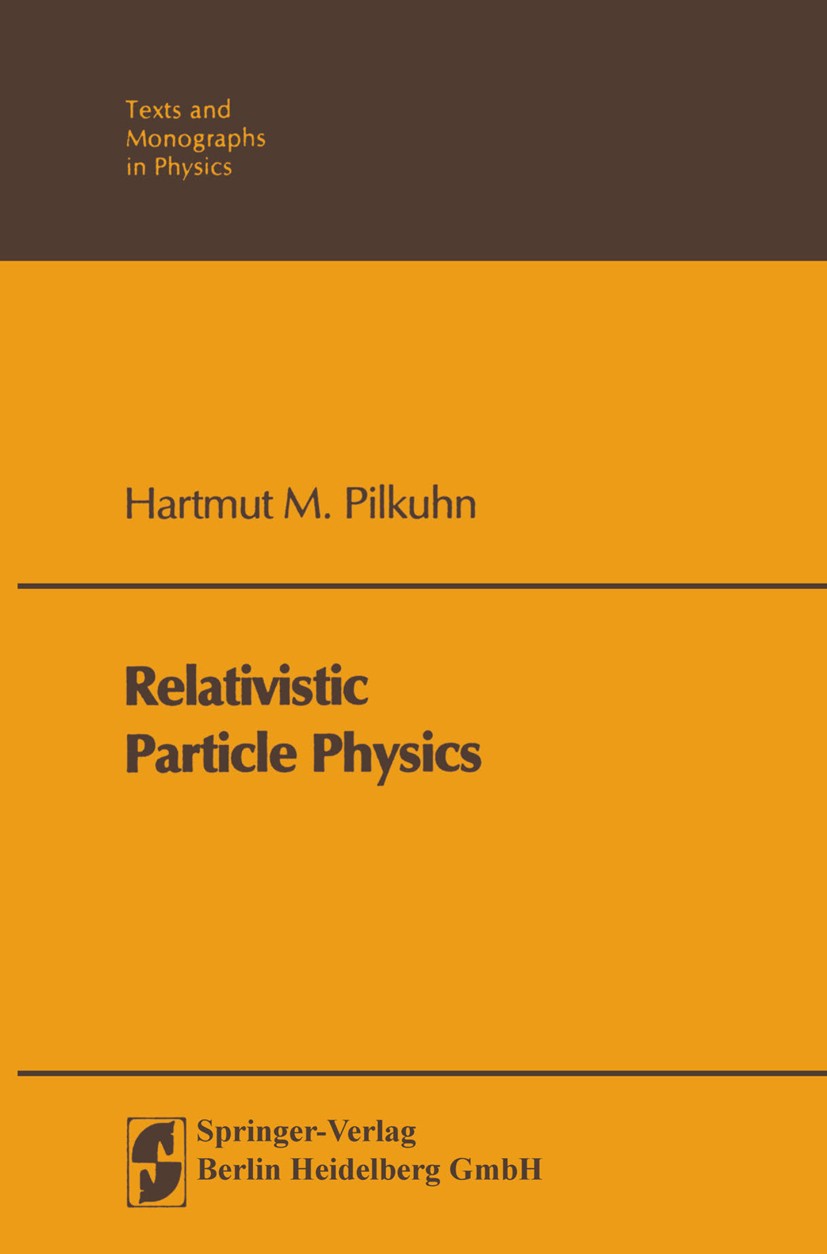| 书目名称 | Relativistic Particle Physics | | 编辑 | Hartmut M. Pilkuhn | | 视频video | http://file.papertrans.cn/827/826228/826228.mp4 | | 丛书名称 | Theoretical and Mathematical Physics | | 图书封面 |  | | 描述 | Why study relativistic particle physics? Because of deeper understanding, curiosity and applications. Consider first deeper understanding. Physics forms the basis of many other sciences, and relativistic particle physics forms the basis of physics. Starting from nonrelativistic point mechanics, there are three major steps: first to classical (unquantized) relativistic electrodynamics, then to non relativistic quantum mechanics and finally to relativistic quantum physics. This book describes the third step. Relativistic particle problems which are mainly classical (such as synchrotron radiation) are largely omitted (see for example Jackson 1975). I have divided the subject into several smaller steps. The step from the Schrödinger equation to the Klein-Gordon and Dirac equations (chapter 1) is easy, apart from logical inconsistencies in limiting cases. Chapter 2 deals mainly with two-particle problems. From two-particle unitarity (sect. 2-5) and a symmetric treatment of projectile and target in the Born approxima tion to scattering (sect. 2-7), one is able to deduce recoil corrections to the relativistic one-particle equations (mainly the reduced mass, sect. 2-9). The final formula | | 出版日期 | Textbook 1979 | | 关键词 | Dirac equation; Elementarteilchen; Quantenelektrodynamik; Relativistische Quantenmechanik; mechanics; qua | | 版次 | 1 | | doi | https://doi.org/10.1007/978-3-642-88079-7 | | isbn_softcover | 978-3-642-88081-0 | | isbn_ebook | 978-3-642-88079-7Series ISSN 1864-5879 Series E-ISSN 1864-5887 | | issn_series | 1864-5879 | | copyright | Springer-Verlag Berlin Heidelberg 1979 |
The information of publication is updating

|
|
 |Archiver|手机版|小黑屋|
派博传思国际
( 京公网安备110108008328)
GMT+8, 2025-12-14 18:02
|Archiver|手机版|小黑屋|
派博传思国际
( 京公网安备110108008328)
GMT+8, 2025-12-14 18:02


